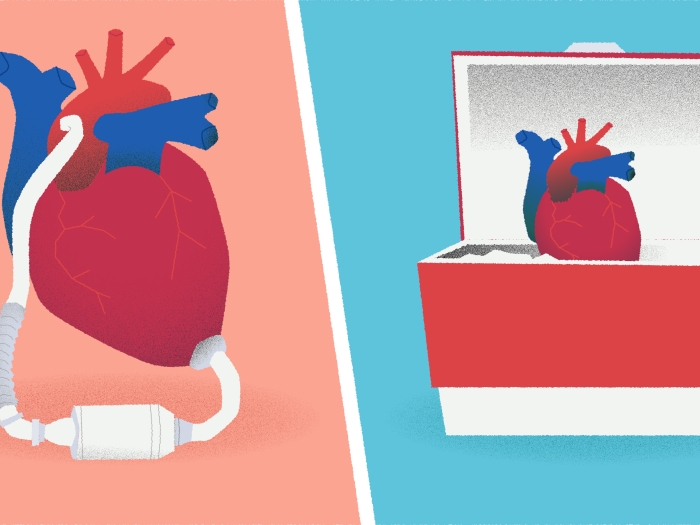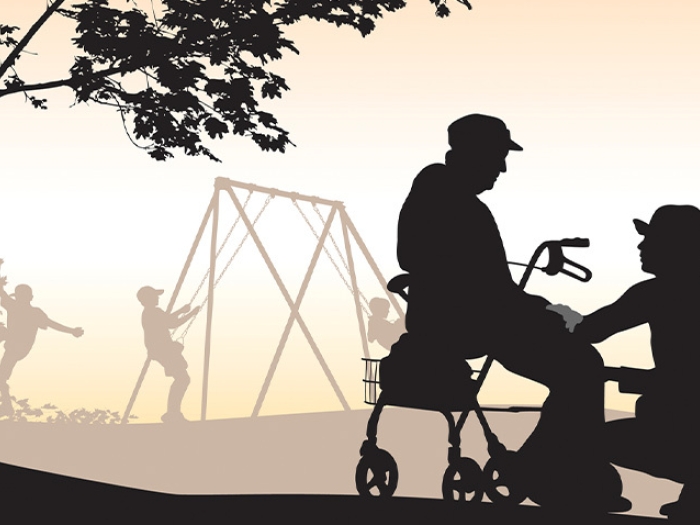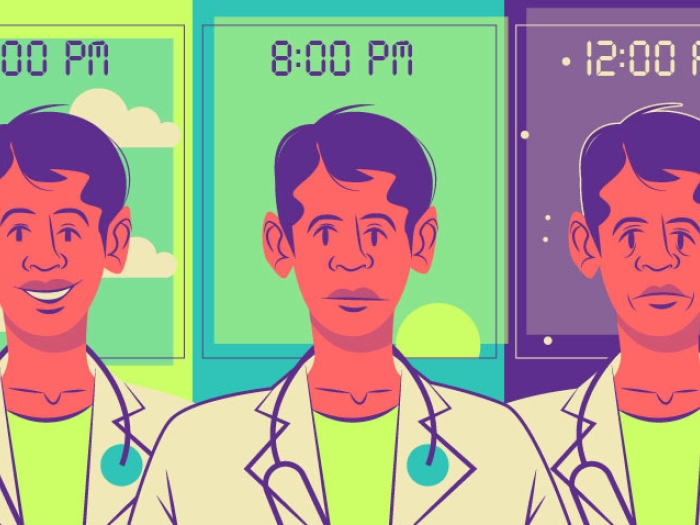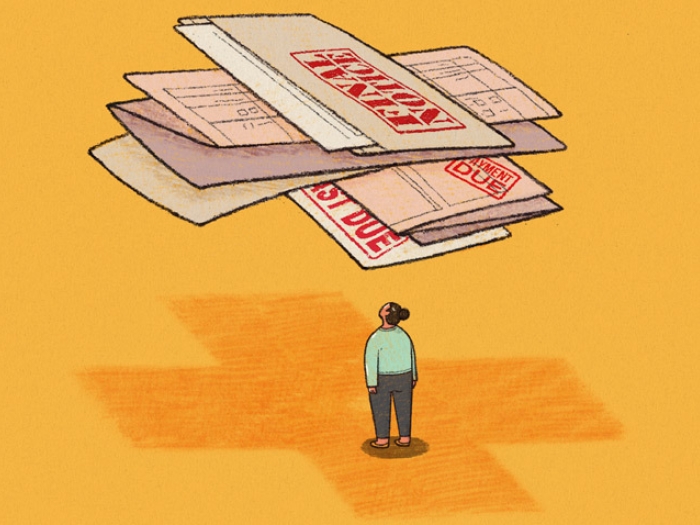As the nationwide health care debate roars on, lauded U-M health policy researcher John Z. Ayanian, M.D., M.P.P., reflects on research’s role.
7:00 AM
Author |
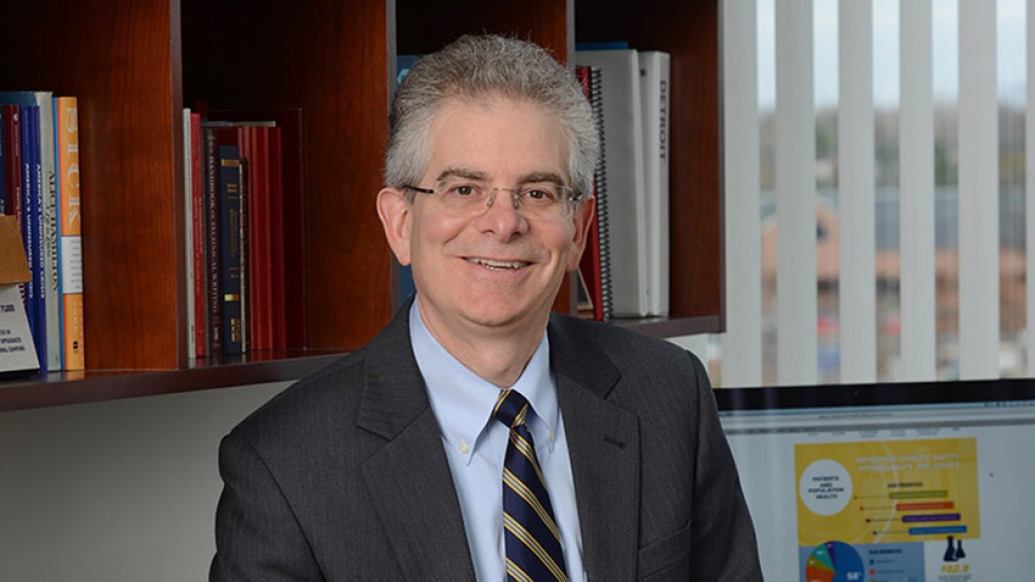
Not many young doctors step out of their intense training paths to pursue a master's degree in public policy. Yet the laws and regulations made in Washington, D.C., and state capitals deeply affect how doctors and other health professionals care for patients, and how they get paid to do it.
MORE FROM THE LAB: Subscribe to our weekly newsletter
For John Z. Ayanian, M.D., M.P.P., that extra training in the ways of Washington has led to a career bridging the worlds of medicine and policy — and trying to improve both through research.
Three decades into his career, he's nationally known for studying the consequences of state and national health policies including the Affordable Care Act, racial and ethnic disparities in health care and the impact of being uninsured. For this, his peers just gave him one of their highest honors — the AcademyHealth Distinguished Investigator Award.
As the first director of the University of Michigan Institute for Healthcare Policy and Innovation, he leads a community of 510 researchers who — like him — study health care and the impact of public policy on the health of patients and communities.
With health policy a white-hot national topic, Ayanian reflects on the role of health services research in our society to date, and its future.
First, can you explain what health services research — your field — actually is?
Ayanian: It's easiest to think of it as the kind of research that studies what works and what does not work in specific areas of health care, as well as the consequences of past policy decisions on people's lives and health, and what factors are affecting the health of specific groups of people.
We do this by finding points of entry into the vast American health care system, such as opioid-related issues, surgical safety, hospital infections and much more. It's a very data-driven type of research. Instead of having laboratories where we make discoveries, or running clinical trials to test new medicines or devices, health services researchers seek out, gather and analyze information from the broad spheres of health care and community health.
You've done health services research for nearly three decades. What has changed most in that time?
Ayanian: One major change has been the growing importance of connecting research with relevant stakeholders in the public and private sectors, in an effort to make sure our results are being used in clinical practice and policy to the fullest extent possible.
It's our field's version of "translational research," similar to what the laboratory scientists are trying to achieve when they bring their discoveries out of the lab and into clinical trials in patients.
SEE ALSO: Medicaid Expansion More Than Pays for Itself, Study Finds
This has led to tremendous growth of the field of implementation science, which studies how well clinical teams adopt new clinical practices — ones that previous research has shown to be beneficial or to reduce harm. Once we develop guidelines for better care, how can we get them to stick?
We've also seen more focus on community engagement, so that members of the communities whose health we're studying actually have a chance to be involved in all stages of that research.
The rapid growth of web- and mobile-based technologies for gathering data, communicating with patients and providers, and sharing information with the public has also brought great change.
Today, there's greater emphasis on doing more rapid-cycle research, and sharing the results with relevant audiences rapidly, too. We used to rely almost entirely on publishing research results in top journals. Now, we also have social media to help us spread our findings at a more grass-roots level.
There's also been incredible growth in access to "big data" and high-complexity data — not just the insurance claims data we've used for three decades, but also genomic information, information from the electronic health record systems that most providers now use and data on community and environmental factors.
We're just beginning to make use of techniques that are more common in other fields, such as machine learning and data visualization tools. We need to leverage the expertise of data scientists much more than we have in the past.
As researchers are studying the impact of the ACA, the effort to repeal and replace it is ongoing. Can you reflect on this moment in time and the role of health care researchers?
Ayanian: The ACA was built on health services research. But no matter what happens next, the need to understand the impact of major changes in health policy on people's lives will be as great as ever.
With current research on the impact of the ACA — less than four years into the actual implementation of most of its major provisions — more researchers are taking a "mixed methods" approach. Historically, most of our field's research has been quantitative. But that means the stories of individuals and communities are lost. Our Michigan institute is encouraging our faculty members to use qualitative methods in combination with quantitative ones to understand the stories and give policymakers, reporters and the public a way to understand purely statistical information more fully.
Since the ACA took effect, research about its impact is happening faster than in past periods following major health care legislation, and this is a positive change.
The traditional approaches to publishing research, through the peer review process, have also become faster. But not as fast as the demand from the public and policymakers for information they can use. Publishing a paper in a top medical journal can take three to six months after it is submitted, on top of the time for gathering and analyzing data and writing a paper about the findings. Peer review is an important mark of distinction and quality, but we also need to work toward more rapid-cycle data analysis and dissemination in order to help policymakers understand the impact of what they've enacted, or the potential impact of what they are discussing.
With the uncertain fate of the Affordable Care Act, the need for solid evidence to guide policy will remain strong — whatever direction health policy takes going forward.John Z. Ayanian, M.D., M.P.P.
How could health services research become more impactful? What could institutions and research funding sources do to enhance the capacity of researchers to make new findings and share them with audiences that can act on them?
Ayanian: One approach that we've taken in Michigan has been to partner with our state Department of Health and Human Services. By establishing, maintaining and building ongoing partnerships with stakeholders, we can understand what the most pressing and relevant issues are for research — and they can understand our expertise and how it can help them solve these pressing problems and bring the best evidence to bear on issues.
We're also working at Michigan to use health services approaches to make an impact on clinical practice, by helping researchers engage with clinical leaders to design and evaluate changes in practice at our academic medical center, so we have better evidence of what works, and evidence to support the spread of changes.
With the uncertain fate of the Affordable Care Act, the need for solid evidence to guide policy will remain strong — whatever direction health policy takes going forward. I encourage both producers of this evidence and decision-makers who use it to renew our focus on achieving a high-value health care system that meets the needs of all Americans, especially those who may be at greatest risk from any changes to come.
What do you think the public most needs to know about data-driven health care research and its impact on their lives?
Ayanian: In many ways, the public is already reaping the benefits of past health care research, often without knowing it.
We commonly identify situations where it may be possible to prevent bad outcomes in health care. But people may not be aware of the benefits of such research that focuses on prevention until there's an unexpected crisis because of a lack of preventive efforts.
For example, many of the gains we've made as a society in preventing illness and death from cardiovascular disease — such as heart attacks and stroke — are because of data-driven research. This work made it possible for clinical teams to do a better job of diagnosing and treating urgent issues, to help patients reduce risk factors and to diagnose illnesses like diabetes before they became severe.
We can also see the impact of health services research in efforts to connect patients with information about their health and their care, because research has shown that engaged patients have a better chance of good health outcomes.
SEE ALSO: How 'Love' and a Landmark Paper Improved Health Care
The new era of precision medicine and precision health that we're entering will make it even more possible to use personal data — for instance from fitness trackers or smartwatches — to study and improve health in real time.

Explore a variety of healthcare news & stories by visiting the Health Lab home page for more articles.

Department of Communication at Michigan Medicine
Want top health & research news weekly? Sign up for Health Lab’s newsletters today!
